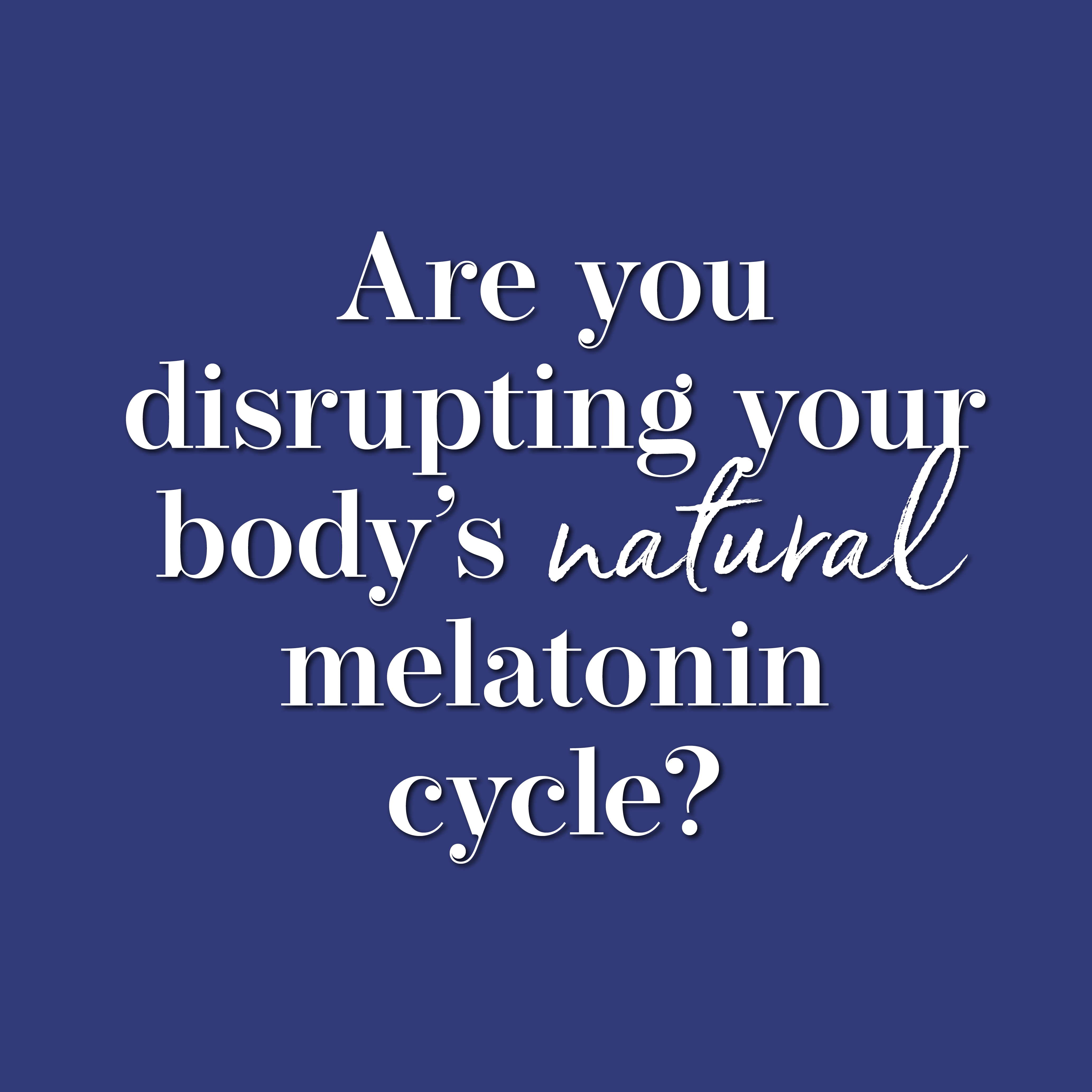Is a melatonin supplement effective for the blissful sleep you’re craving??
You’re bleary-eyed – another night of no sleep… and sitting there staring at that melatonin ad…. should you?
When I was a child, my family took a summer trip to Alaska, where the sun routinely set around midnight. My younger brothers and I thought this was awesome! We never-wanted-to-go-to-sleep!! My parents did not find that so awesome. We knew the clock said it was late, but we simply did not feel tired. Years later, I learned why: The late bright light was delaying our melatonin release, and throwing off our entire Circadian Rhythm / body clocks.
The reality – so often the parents I see who are reaching for a melatonin supplement for their child or themselves, are also [totally inadvertently] often doing something that entirely disrupts their natural melatonin system. If you can stop the disruption of the natural cycle in the first place, you’ll find that most children (and adults) don’t need melatonin supplements at all. The good news? (yes, you bleary-eyed darling, there is good news) – our melatonin system is so responsive to the environment around us, that just a few simple changes can help reset it – no supplements required. (Read this post on why I don’t recommend Melatonin supplements in most kids – and why OTC melatonin is banned in many countries).
How to Effectively Reset Your Melatonin Cycle – Without a Supplement
**Can’t sleep? Run through this checklist before tonight (hint, this works for you AND your kids).
Instead of a melatonin supplement, think of it like “Resetting your Circadian Rhythm”. That’s governed by many things, but the most important is light. Cells in your eyes sense light intensity, and convey to your brain and body *when* you are in time. When lights are dark, that translates to “start getting ready for sleep” to the rest of the body. When lights are bright – regardless of the actual time of day – it’s the opposite. We’re wired to do that in reaction to the sun – but artificial light and devices throws us off.
To reset your Circadian Rhythm, consider the light you’re exposed to all day – and try to make it mimic the natural sun as possible (or use other hacks like those mentioned below, so that the artificial light doesn’t disrupt your Circadian Rhythm).
Here’s how to implement it
- Turn down bright lights 90 minutes before bed. It takes approximately 90 minutes of dim light for your melatonin levels to start to rise – studies in preschoolers showed that bright overhead lights suppressed melatonin levels by up to 90%. Keep ambient household lights (like hallways and other rooms) slightly lower during the bedtime routine and until after your child is asleep. Otherwise, bedtime stalling tricks like running out of their room will expose them to bright light, suppressing their melatonin release8 and further delaying sleep. And nobody wants that. Otherwise, bedtime stalling tricks like running out of their room will expose them to bright light, suppressing their melatonin release8 and further delaying sleep. And nobody wants that.
- Dim bedroom bulbs. Do NOT read bedtime stories under a bright overhead light. Instead, In both kiddo’s and your bedroom at bedtime, leave off overhead lights and only use bulbs that are under 40-watt equivalents (or around 400 lumens or 10 LED watts in the new bulbs) with no more than 300-watt equivalents total on in a room, advises Dr. Michael Breus. New LED bulbs emit even bluer light than traditional incandescent bulbs did,9 so keep them off in the evening entirely. I designate a single small lamp with low-wattage bulbs in each bedroom, and that’s all we turn on before bed (Breus recommends special bulbs with blue light filters called “good night” bulbs). Lights with a dimmer also work, as do fancy “smart bulbs” that change their hue to emit less blue light at night.
- Block even the little lights for kiddos still struggling. Even if a light isn’t bright enough to consciously bother you, your brain can detect it through closed eyelids (see, moms do have eyes in the back of their heads).10 With all the little blinking lights in our rooms (cable boxes, thermostat, alarm system, alarm clocks), it’s like command central even at night. Turn them off if possible or simply cover them (I’ve used duct tape or an old T-shirt in a pinch).
- Cover windows and doors. If light is coming in through your windows, invest in blackout shades or darker fabric, and tack down the edges, too. If light comes around your door, apply a light-tight strip around its rim.
- Use nightlights for bedtime bathroom wakenings. You don’t want a little bathroom trip to end up being an entire night awake.
- NO devices in the 2 hours before bed. It’s tempting, but if your child is having trouble sleeping, it’s likely that their device is a huge culprit. Expect 1-2 hours of awake time after the last moment that they were on their device. Also, designate a centralized charging station, so devices aren’t kept in their room. Studies are clear that having a phone charge in a child’s room lowers both quantity and quality of sleep – even if the sound is off. Plus, it’s just too tempting to keep scrolling, which has the double-effect of blue light suppressing melatonin, plus the emotional charge that social media creates. Also, put devices on “Do Not Disturb” at night. If your child must use your device before bed (say for homework), wear blue light blocking glasses (I wear these by Dr. Michael Breus), turn on “Night shift” on your phone (which dims screen light and reduces blue light), or Dr. Craig Canapari recommends f.lux if you don’t have an apple product with Night Shift.
- Get at least 2 hours of outdoor sunshine, every day.
- Get bright light the minute you wake up. This immediately shuts down your natural melatonin levels and primes your brain to be ready to release melatonin earlier that evening. It not only wakes you up, it makes that next night’s bedtime easier. New habit: the minute you get up, go outside if it’s light for a few minutes (10-15 minutes is ideal; the more cloudy or dark it is, the more time is better). If it’s still dark out, look at the phone or computer, and then as soon as it’s light outside, get your 15 minutes of morning sunlight.
Want more?
Find way more sleep hacks in Mom Hacks
Is Melatonin Safe in Kids? (Learn how melatonin works – and why over-use in kids concerns me)








